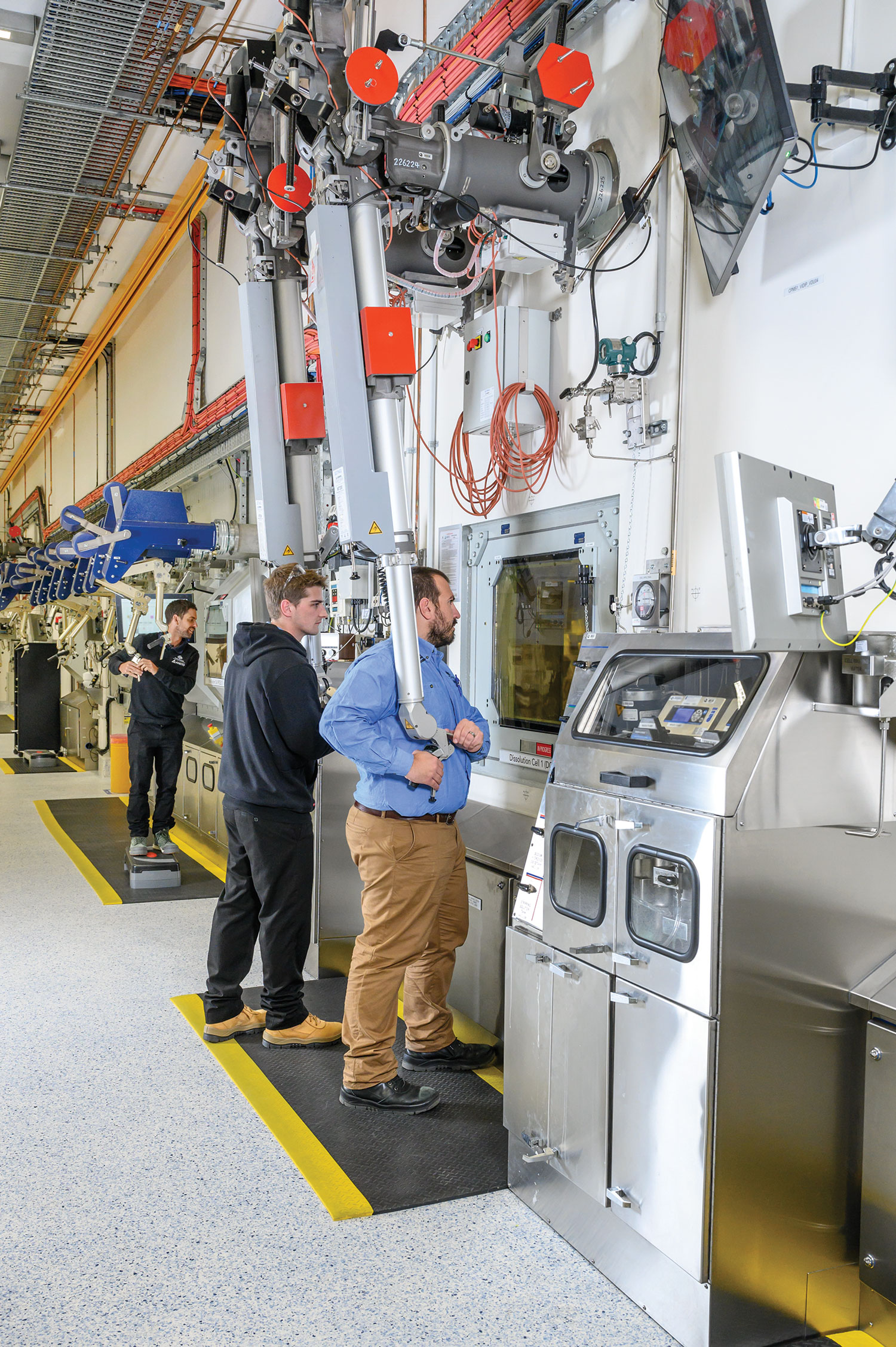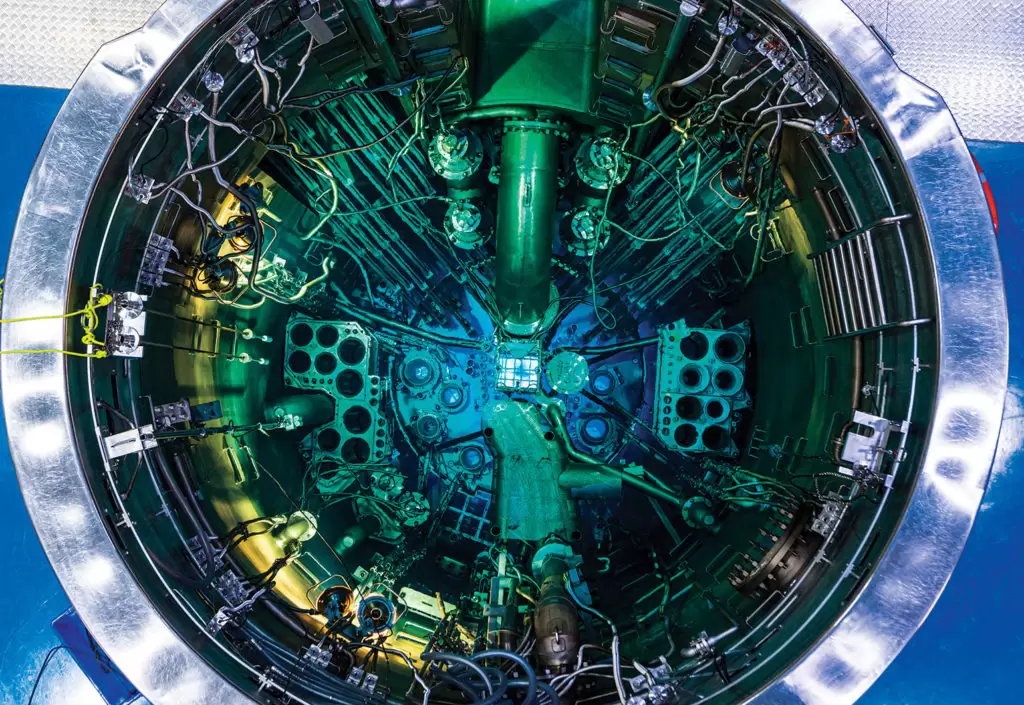Australia’s OPAL Reactor is responsible for a wide range of globally relevant nuclear science contributions, including invaluable medicines.
A Parliamentary inquiry into nuclear energy is underway and due to report by the year’s end, marking the re-emergence of the topic in Australia.
The country has world-leading uranium ore reserves. An initial plan to adopt nuclear power was abandoned in 1972, and enrichment aspirations ended in the early 1980s.
Despite this, Australia can claim globally relevant nuclear science contributions and a neutron factory — which processes imported low-enriched uranium — that punches above its weight in the manufacture of nuclear medicine.

It is estimated that one in every two Australians will at some point be treated using medicine produced at Lucas Heights, about 30 km southwest of Sydney’s CBD. The medicines are used for purposes including scanning musculoskeletal injuries and in diagnosing and treating cancer.
“The social benefit of this medicine is enormous. It is the world’s most commonly used nuclear medicine; tens of millions of patients need access to this medicine around the world every year,” explained Con Lyras, Group Executive Capital Programs and Chief Engineer at Australian National Science and Technology Organisation (ANSTO).
“I am extremely proud to have utilised my engineering skills to be a part of this incredible process, which is saving the lives of people all over the world.”
Lucas Heights produces around 550,000 patient doses a year of technetium-99m for use at medical centres across Australia.
Its ANSTO Nuclear Medicine (ANM) centre began production of molybdenum-99 (the parent isotope of Tc-99m) in April and aims to supply up to 25 per cent of global demand.
Another example of the global relevance of the reactor is its output of irradiated silicon, which uses thermal neutrons to turn some of the atoms into phosphorous to add conductivity.
ANSTO said that in the past three financial years, this output was 65.2 t, 46.3 t and 50.2 t and is currently around 50 per cent of the global market share.
The multipurpose OPAL — Open Pool Australian Lightwater — reactor and associated infrastructure is managed by ANSTO, which also operates Melbourne’s Synchrotron and three other research facilities.
Lyras told create ANSTO employs more than 400 engineers, who “work on everything from upgrades and maintenance of the OPAL reactor through to the beamlines in the Australian Centre for Neutron Scattering, materials research, and the Australian Synchrotron in Melbourne”.
The Lucas Heights site has 1200 employees, with a third involved in scientific research, spanning areas from materials, health and climate science to mining and engineering.
HIFAR to OPAL
HIFAR — High Flux Australian Reactor — is a National Engineering Landmark and was the southern hemisphere’s first nuclear reactor.
It was a 10 MW research reactor, and one of six DIDO-class systems built globally. Construction took place in 1956 and 1957, and it achieved criticality in January 1958 before officially opening the following April and going full power on 20 October 1960.
Between its opening and 1961, it used 93 per cent enriched uranium — 93 per cent of the uranium was in the form of the isotope U-235 and seven per cent was U-238. Eighty per cent is considered weapons grade.
The enrichment was reduced substantially over the years to under 20 per cent — which is defined as low enriched uranium (LEU) — in 2005.
HIFAR’s replacement, OPAL, also uses LEU as a fuel.
Funding for the 20 MW OPAL was announced in 1997, a contract was signed for construction in 2000, criticality was achieved in August 2006 and full power was reached the following November.
Like HIFAR, OPAL continues to make isotopes for medicine, industry and scientific use.
Neutrons, which can penetrate an object more deeply than X-rays, are produced for use in neutron beam scattering instruments for materials research. Doped silicon was an important output then and is now. Ditto for molybdenum and technetium.
A paper from the World Nuclear Association describes some of OPAL’s advantages over HIFAR, including that it has a cold neutron source, allowing for beams that can be used to research biological materials.
An article from the association’s news website that was published in 2007, the year HIFAR was decommissioned, reports that OPAL is capable of three times the neutron flux and four times the capacity to produce molybdenum-99.
OPAL’s core is near the bottom of a 13 m pool of demineralised light water, which is also used as a coolant.
The depth acts as a shield for the radiation produced. The core has 16 fuel assemblies of LEU, with five hafnium control rods.
The core is surrounded by a zirconium alloy reflector tank containing heavy water — deuterium oxide. This bounces neutrons back into the core so they can continue the fission process.
What’s inside?
Waste management
According to ANSTO, 70 per cent of the waste produced at Lucas Heights is general waste. Of the 30 per cent that is nuclear waste, 92 per cent is low level and eight per cent intermediate level.
Roughly 3.5 m3 of solid intermediate waste is produced per year. Low-level waste is shredded and compressed into 200 L drums stored on site.
ANSTO is currently building a new waste treatment plant for intermediate-level liquid waste produced in nuclear medicine production, which is mixed with the organisation’s Synroc additive to “form a granular powder.”
Lyras said that, from mid-next decade, such waste will be treated onsite at the new Synroc facility.
“ANSTO Synroc is a waste treatment technology designed to lock up high-level nuclear waste, providing a safe and secure method for final disposal,” he added.
A thin-walled vessel is filled with granulated waste-form powder, which is then compressed into a solid mass by hot isostatic pressing. The can is designed to collapse into a cylindrical-shaped vessel for storage.The ramping up of production from ANM is another recent development, as is the emergence of Lucas Heights as a hub for start-ups. The ANSTO Innovation Precinct received a boost this year with a $12.5 million commitment from the NSW Government for a new Nuclear Medicine and Technology Hub.
Dr Anne Hellstedt, Innovation Precinct Director, said that the precinct would be a “globally connected, vibrant and inclusive community” of start-ups, researchers and others.
“Over five years, the funding is expected to create incubators for nuclear medicine and technology businesses, giving start-ups access to cutting-edge technology and some of the best science in Australia,” she told create.
“It will also help the establishment of ANSTO’s Graduate Institute, including providing 25 new scholarships for PhD students.”
Accelerated learning
The Australian Synchrotron at Clayton, in Melbourne’s eastern suburbs, opened in 2007, and has been operated by ANSTO since 2013.
ANSTO said its 10 beamlines are oversubscribed, and the facilities are used by more than 5000 researchers annually.
The facility speeds up electrons, which begin in an electron gun — a metal cathode heated to 1000 degrees Celsius — pass through a linear accelerator, are brought to 99.9987 per cent of the speed of light, then directed through a 130 m booster ring with electromagnets.
The electrons perform many laps, which increases their speed and energy. They are kept in a 216 m pressurised storage ring for 30 to 40 hours.
The Synchrotron’s source of X-ray and infrared radiation is used at the 10 end-stations to create highly detailed images, plus “elemental, structural and chemical information” about samples.
A diverse range of industries and applications use the facility. One is studying the atomic structure of micro-electric tips for Monash University’s bionic eye project. Another seeks to understand the distribution of elements in an alloy used for welded rail, and how this impacts reliability.
